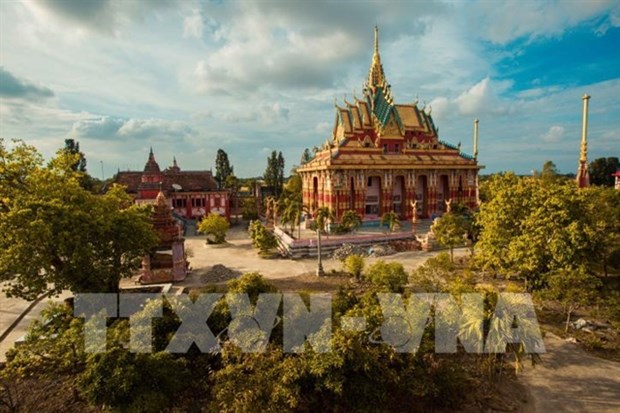
The Xiem Can Pagoda in the Mekong Delta province of Bac Lieu has attracted many visitors with its splendid beauty and great hospitality of the local people.
The Xiem Can Pagoda in the Mekong Delta province of Bac Lieu has attracted many visitors with its splendid beauty and great hospitality of the local people.
Xiem Can Pagoda is one of the biggest and most splendid Khmer pagodas in southern Vietnam.
Located 7km from Bac Lieu town, the pagoda was built in 1887 on an area of over 4,500 sq.m near a coastal alluvial ground, that hosted many constructions, all of them facing the East, a principle in Khmer culture.
The pagoda also has many features that highlight Khmer history and culture. The original name of the pagoda was Komphirsakor Prét Chru, which means “deep river”. It was later changed to Xiem Can, meaning “adjacent to water”.
The pagoda is also harmonious with the architecture of Sala – the place where monks and the Khmer people gather to prepare for important ceremonies.
There are many towers where ashes of dead monks are preserved.
It is a typical feature that helps distinguish the Khmer pagodas with others seen from outside./.
 |
| The Pagoda’s roof contains several layers overlaying each other, forming a sharp top similar to that of a tower (Photo: VNA) |
Located 7km from Bac Lieu town, the pagoda was built in 1887 on an area of over 4,500 sq.m near a coastal alluvial ground, that hosted many constructions, all of them facing the East, a principle in Khmer culture.
The pagoda also has many features that highlight Khmer history and culture. The original name of the pagoda was Komphirsakor Prét Chru, which means “deep river”. It was later changed to Xiem Can, meaning “adjacent to water”.
The pagoda is also harmonious with the architecture of Sala – the place where monks and the Khmer people gather to prepare for important ceremonies.
There are many towers where ashes of dead monks are preserved.
It is a typical feature that helps distinguish the Khmer pagodas with others seen from outside./.
(Source:VNA)





